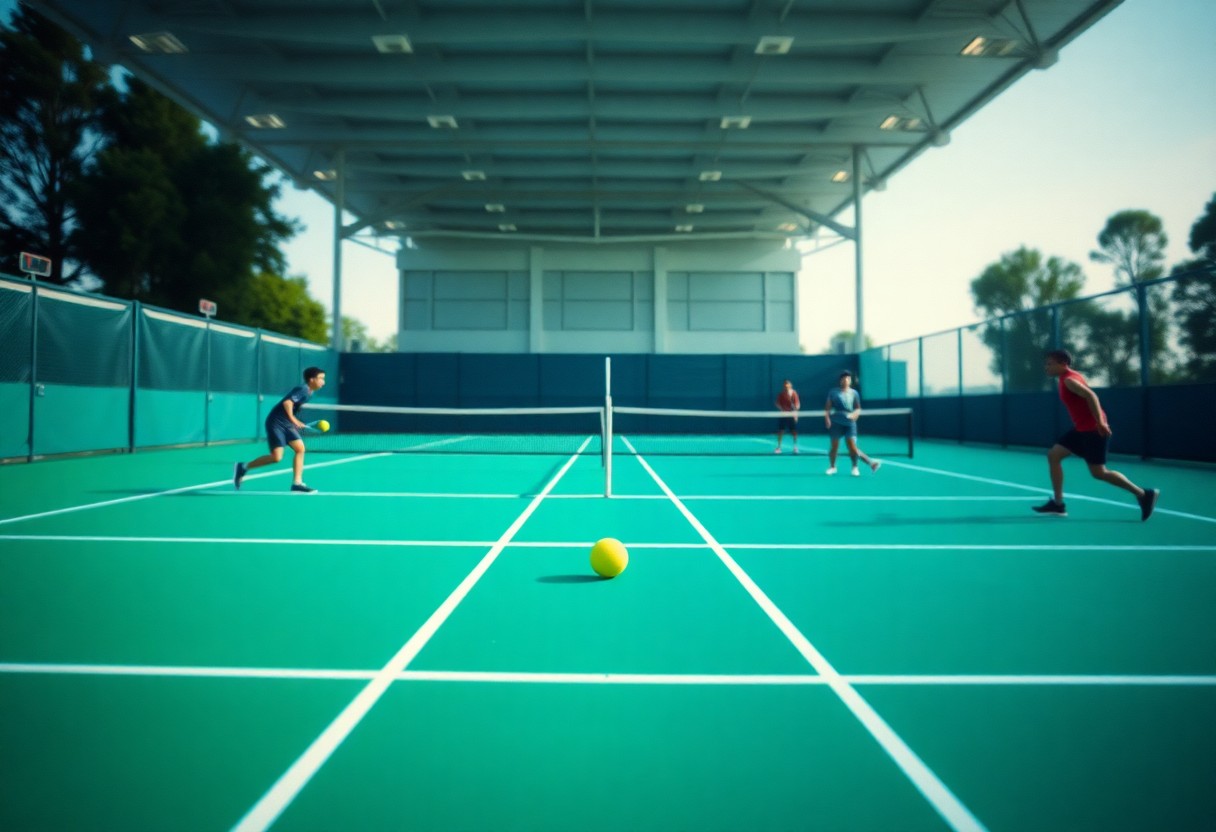Tactics employed during the serve and return phase of tennis can significantly enhance your performance on the court. By mastering strategic positioning and effective shot selection, players can gain an upper hand against opponents. Understanding how to anticipate returns and execute powerful serves can make all the difference in tight matches. This guide explores key strategies that not only boost your confidence but also maximize your winning potential. Dive into these necessary tactics to elevate your game and stay ahead of the competition.
Understanding Serve and Return Tactics
Serve and return tactics are fundamental strategies that shape competitive dynamics in sports such as tennis, volleyball, and table tennis. By mastering these tactics, players can control the pace of the game and dictate play, leading to an upper hand against their opponents. The ability to effectively serve and return the ball not only demonstrates technical skill but also involves mental astuteness and strategic planning. Players must read their opponents while maintaining a focus on their own strengths to maximize effectiveness.
Types of Serve and Return Strategies
Different strategies can be employed based on the context of the game and the opponent’s weaknesses. Types of serve and return strategies typically include aggressive, defensive, and mixed approaches. Players often adapt their strategies to exploit specific areas of the court or force errors from their opponents. A well-executed serve can not only win points outright but also create advantageous positions for subsequent returns.
| Strategy | Description |
| Aggressive Serve | Focuses on speed and precision to overpower the opponent. |
| Defensive Return | Aims to keep the ball in play while waiting for errors from the opponent. |
| Mixed Tactics | Combines both aggressive and defensive elements depending on gameplay. |
| Placement Serve | Targets specific areas of the court to manipulate opponents’ positioning. |
| Spin Serve | Utilizes spin to create unpredictable bounce and timing challenges. |
Key Factors Influencing Effectiveness
The effectiveness of serve and return tactics is influenced by various key factors, including player skill level, court conditions, and opponent’s weaknesses. Understanding these elements allows players to customize their approach, leading to greater success on the court. Environmental factors such as wind or surface type can also impact a player’s ability to serve effectively, making adaptability paramount.
- Player Skill Level – Higher skill levels lead to more effective execution.
- Court Conditions – Surface type can significantly alter ball behavior.
- Opponent Weaknesses – Targeting weaknesses improves tactical advantage.
- Pressure Situations – Player performance may fluctuate during high-stress moments.
- Feedback Mechanisms – Continuous improvement through analysis enhances ability.
Detailed analysis reveals how pressure situations can dramatically influence a player’s effectiveness during serves and returns. For instance, statistics show that players often perform well under moderate pressure but may falter under extreme conditions, impacting their tactical choices. Furthermore, utilizing feedback mechanisms such as video analysis allows players to refine their serves and returns based on past performance, ensuring continual growth and sharpening of skills.
- Video Analysis – Helps in identifying patterns and correcting errors.
- Practice Frequency – Consistent practice enhances muscle memory and precision.
- Anticipation Skills – Improving ability to read opponents enhances response times.
- Coaching Insights – Professional input can bring new strategies to light.
- Game Experience – Real-match scenarios build confidence and adaptability.
Implementing Serve and Return Tactics
To effectively implement serve and return tactics, organizations should adopt a systematic approach. This involves training relevant team members, integrating technology for data analysis, and continuously refining strategies based on feedback. The goal is to create a responsive environment that empowers staff to engage directly with clients, optimizing the serve and return framework. This promotes dynamic interactions that lead to a deeper understanding of client needs.
Step-by-Step Guide to Execution
| Identify key stakeholders | Engage in regular feedback loops |
| Train team members on protocol | Utilize CRM tools for tracking interactions |
| Set measurable objectives | Analyze feedback and adapt strategies |
Tips for Mastering Each Tactic
Effective mastery of each tactic requires practice and alignment with overarching business goals. Consistent application in real scenarios enhances skill proficiency. Furthermore, analyzing past interactions can guide improvements, while simulations can provide safe environments for team members to refine their approach. The integration of technology also aids in tracking performance metrics and client responses.
- Engage in regular practice
- Analyze past interactions
- Leverage CRM systems
Implementing these tips involves creating a routine that includes role-playing and requesting feedback after each interaction. Encouraging team members to review their performance can lead to progressive improvements. Conducting regular workshops on skill enhancement ensures that each member is confident in their approach. The development of a support culture fosters continuous learning and application.
- Conduct regular role-playing sessions
- Encourage peer feedback
- Implement workshops on skill enhancement
Evaluating Serve and Return Tactics
To assess the effectiveness of serve and return tactics, teams must analyze their performance metrics and the impact of various strategies on match outcomes. This evaluation should involve studying both quantitative data, such as win percentages and unforced errors, and qualitative insights, like player confidence and adaptability during matches. By examining these factors, organizations can identify which tactics yield the highest competitive advantage and optimize their training methods.
Pros and Cons of Different Strategies
Pros and Cons of Different Strategies
| Pros | Cons |
|---|---|
| High-risk serves can intimidate opponents. | Increased chance of double faults. |
| Variety in serving angles keeps players guessing. | Complexity may confuse less experienced players. |
| Effective returns can dictate match tempo. | Requires exceptional timing and skill. |
| Adaptive tactics enhance in-game flexibility. | Overthinking can lead to hesitation during play. |
| Consistent serves build player confidence. | Predictability may allow opponents to counter. |
| Strategic placement can exploit opponent weaknesses. | Risk of underestimating the opponent’s return skills. |
| Collaborative play fosters team synergy. | Requires extensive practice to master. |
| Can be tailored to specific opponents. | May backfire if the opponent adjusts quickly. |
| Analyzing opponent behavior enhances strategy. | May divert focus from fundamental skills. |
| Increases overall game complexity. | Time-consuming to develop and implement. |
Measuring Competitive Edge
Gaining a competitive edge relies on rigorous measurement and analysis of performance data stemming from serve and return tactics. Utilizing tools such as video analysis and match statistics allows teams to quantify their strengths and weaknesses. For instance, tracking return accuracy and serve speed can uncover correlations with match results. Organizations can also benchmark their performance against competitors, thereby identifying tactical areas for improvement. Regular assessments lead to informed adjustments, ensuring that teams remain agile and competitive in their strategic approach.
Conclusion
Hence, mastering serve and return tactics empowers individuals to enhance their competitive edge in various fields. By focusing on strategic interactions, active engagement, and responsive actions, one can create a dynamic framework for success. This approach not only fosters stronger relationships but also cultivates a culture of collaboration and innovation, ultimately leading to improved outcomes. Embracing these tactics ensures that you remain adaptable and effective in an ever-evolving landscape.
FAQ
Q: What are Serve and Return tactics?
A: Serve and Return tactics involve a back-and-forth exchange in communication, where one party presents an idea or request (serve), and the other responds with feedback or additional information (return). This dynamic enhances collaboration and problem-solving in competitive environments.
Q: How can Serve and Return tactics improve team dynamics?
A: These tactics promote active listening and engagement within a team. By encouraging team members to share their thoughts and respond to others, it builds trust, fosters innovation, and leads to more effective decision-making.
Q: Can Serve and Return tactics be applied in customer interactions?
A: Yes, applying Serve and Return in customer interactions enhances relationship building. Engaging customers by asking for their feedback and addressing their concerns shows that their opinions matter, leading to increased loyalty and satisfaction.



